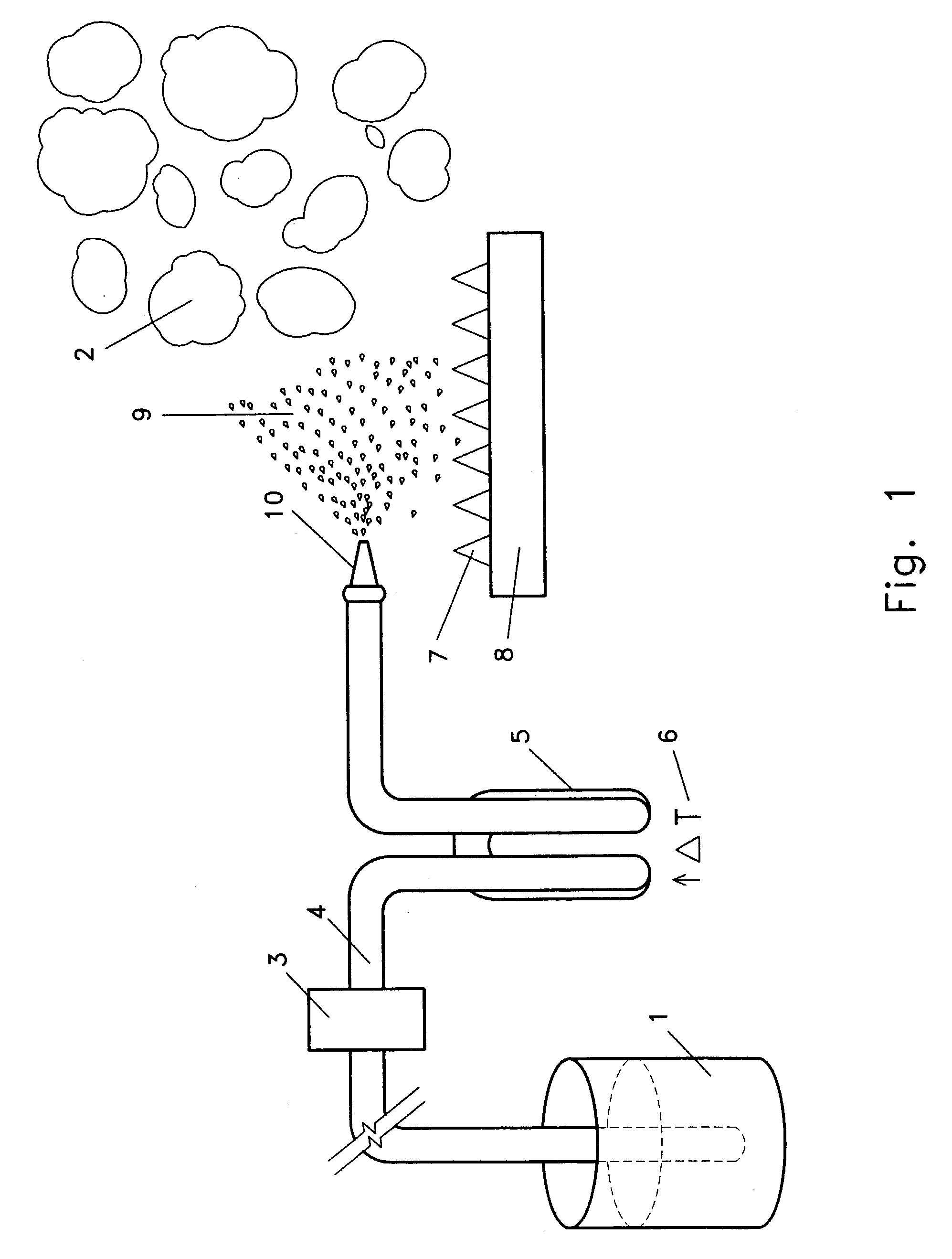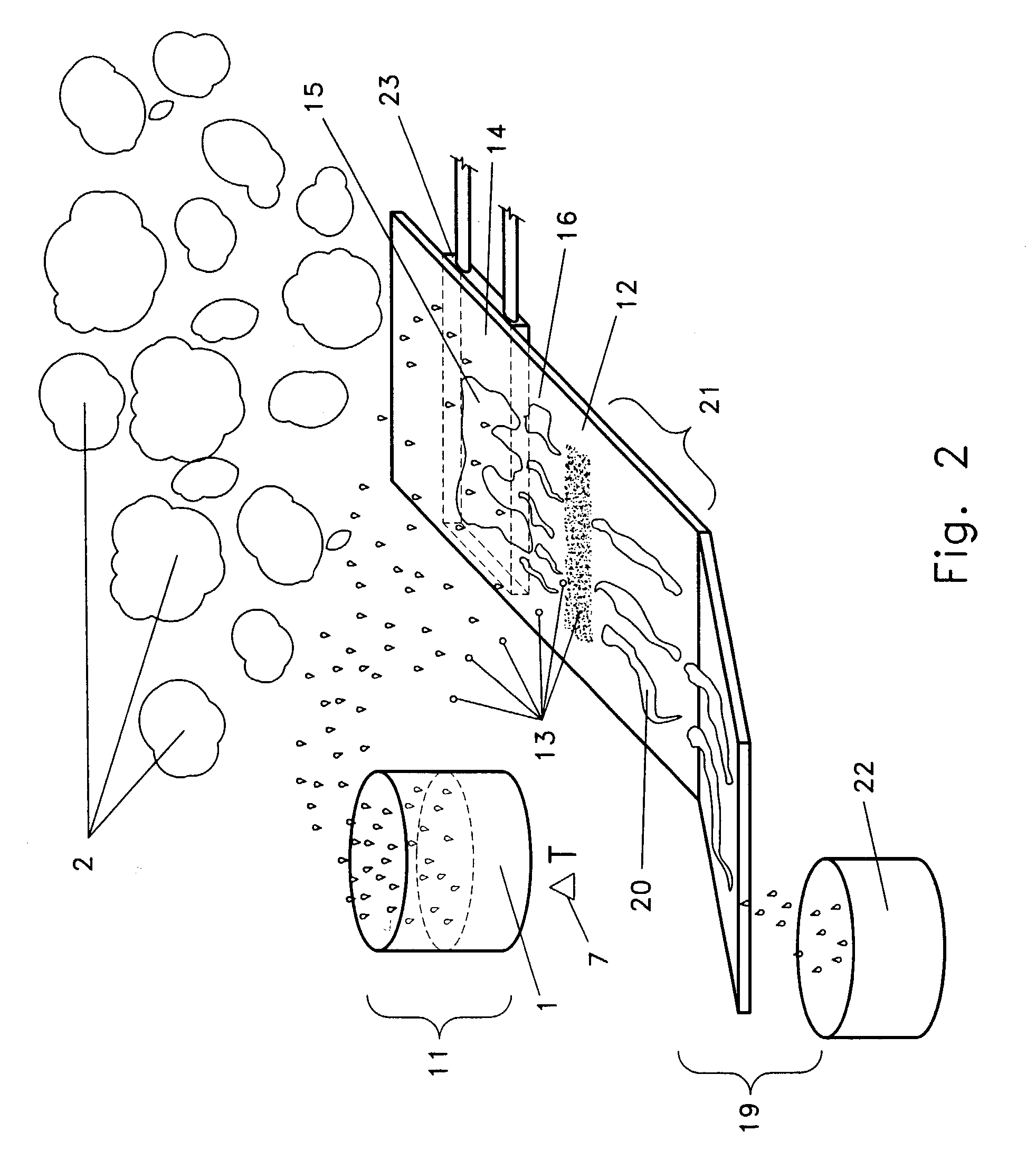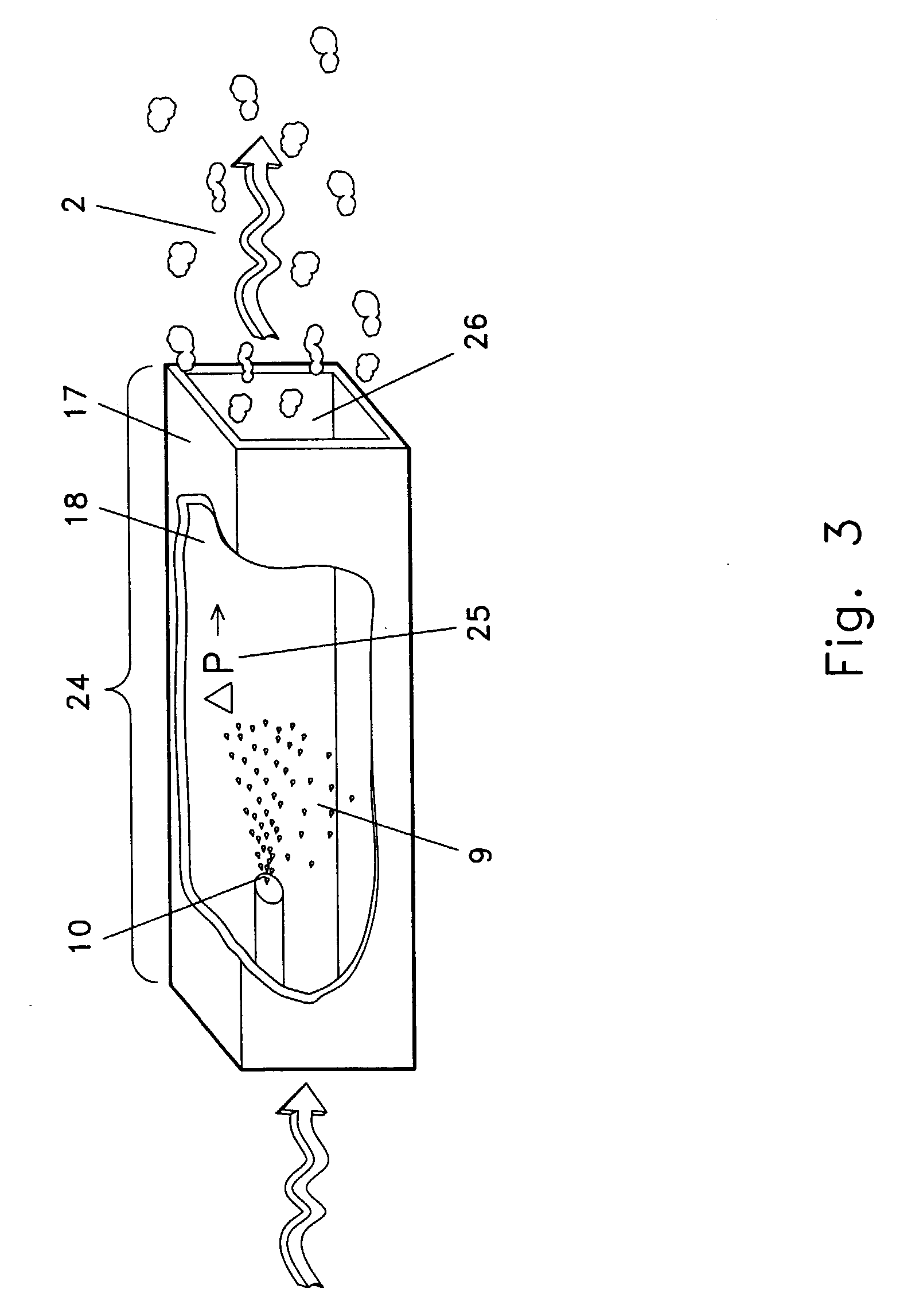Accelarated water evaporation system
a technology of evaporation system and evaporation chamber, which is applied in the direction of machine/engine, lighting and heating apparatus, separation processes, etc., can solve the problems of liquids that cannot be re-evaporated, liquids generated from well drilling operations are typically left for long periods of time to slowly evaporate, and liquids cannot be re-evaporated, etc., to achieve cost-effective and eliminate long-term problems of water production
- Summary
- Abstract
- Description
- Claims
- Application Information
AI Technical Summary
Benefits of technology
Problems solved by technology
Method used
Image
Examples
Embodiment Construction
[0039] The invention relates to apparatuses and methods for the conversion of liquids to gases. Several basic embodiments of the invention are first described followed by preferred embodiments of the invention including the best mode of use.
[0040] First referring to FIG. 1, an embodiment of the invention to convert a liquid (1) to a gas (2) is illustrated. With respect to embodiments of the invention of this type, a pressurization element (3) is responsive to liquid (1). In certain embodiments of the invention, the pressurization element (3) can comprise a positive displacement type pump. Alternately, in other embodiments of the invention the pressurization element (3) can comprise compressed air means. With respect to the operation of the compressed air means, compressed air can be forced into the liquid (1) within a liquid compression zone (4). The liquid compression zone can for example be a length of tube, a closed container, or the like. As the compressed air displaces the liqu...
PUM
 Login to View More
Login to View More Abstract
Description
Claims
Application Information
 Login to View More
Login to View More - R&D
- Intellectual Property
- Life Sciences
- Materials
- Tech Scout
- Unparalleled Data Quality
- Higher Quality Content
- 60% Fewer Hallucinations
Browse by: Latest US Patents, China's latest patents, Technical Efficacy Thesaurus, Application Domain, Technology Topic, Popular Technical Reports.
© 2025 PatSnap. All rights reserved.Legal|Privacy policy|Modern Slavery Act Transparency Statement|Sitemap|About US| Contact US: help@patsnap.com



